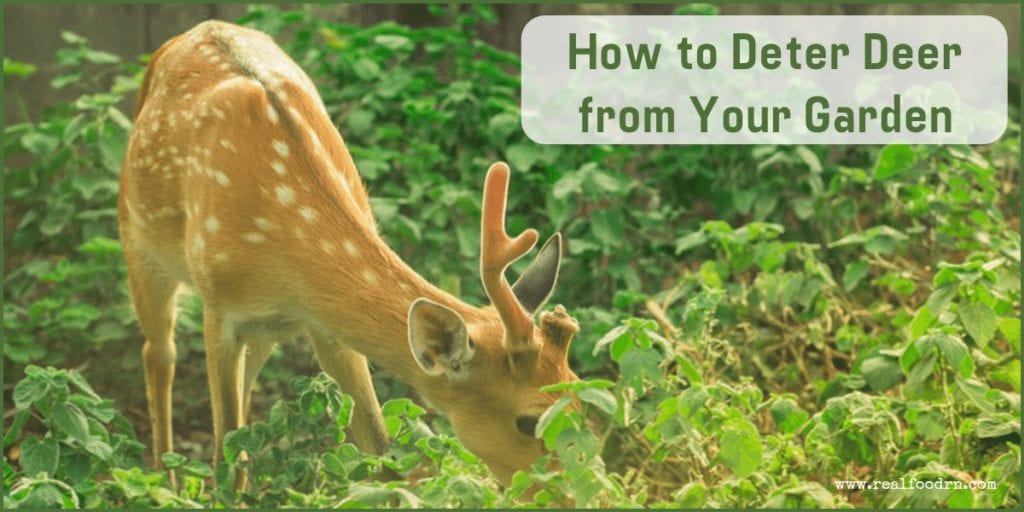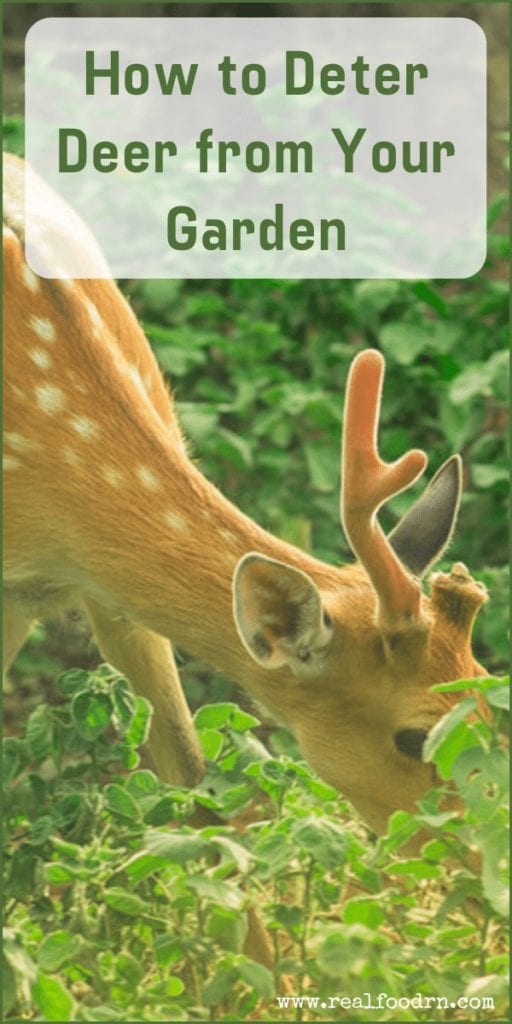
The first time you see a deer in your garden, you might be amazed, even thrilled to see a wild animal so close. If you grew up in a city or a big town, wildlife can seem like a little bit of magic.
But wild deer up close are not like having Bambi come to visit. Deer are greedy, rapacious, and don’t understand anything about sharing. They won’t respect your carefully-tended vegetable plot or your beautiful perennial borders.
Added to that, deer are smart and will soon discover a work-around for your attempts to keep them away from your precious plants. As suburbs extend deeper into rural areas where deer are prevalent, they are becoming a bigger and bigger problem.
So, what do you do? Whether you’re dealing with white-tailed deer in the east or mule deer in the west, you need to develop a deer deterrent strategy. And that means being smart and flexible and staying at least two or three steps ahead of your local deer.
Most experts agree that you need to discourage deer from your garden by using more than one tactic. It may take a period of trial and error to work out what combination works best for your area.
1. Don’t Plant a Deer-Menu Garden
It might sound obvious, but the first step is to avoid having plants in your garden that deer can’t resist. If you’re mad that the deer ate your pansies, then it’s time to plant something else or plant smarter.
Deer love soft, nutrient-rich plants. Their favorite foods include English ivy, pansies, hostas, impatiens, clematis, as well as other flowers, and of course, the contents of your fruit and vegetable garden: beans, peas, strawberries, and peaches.
2. Plant Smarter
You can either replace plants with ones that deer dislike or plant your favorites closer to your house. Deer don’t like plants that have:
- Hairy or bristly foliage like lambs’ ear, tuberous begonias, poppies, lady’s mantle, and yarrow. If the leaves feel rough or fuzzy to the touch, they won’t feel pleasant to a deer’s tongue.
- Prickly leaves and stems Deer will generally avoid bear’s breeches, Echinops, sea holly, and ornamental artichokes. Unlike roses, they can’t selectively pick off delicious buds and avoid the prickles.
- Aromatic foliage Plants that have a strong scent can confuse deer so you can plant aromatic plants like herbs, lavender, sage, boxwood, and mint to your heart’s content.
There are many other deer-resistant or distasteful plants including grasses, plants with tough foliage like irises, peonies, and viburnums, and plants with deer-toxic foliage. Deer will avoid ferns, daffodils, hellebores, and bleeding hearts.
3. Use Structural Barriers
Besides reviewing your choice of plants, you should also look at structural ways to keep deer out of your garden.
Fences
Deer are famous leapers, so you will need to ensure that whatever fence you build is over six feet tall. Also, deer are less likely to jump over a solid fence than one they can see through. If you have a post and rail or split rail fence, you should consider replacing it with a solid fence, wall or stockade-style fence.
A more drastic fencing option is to go electric. You can have electric deer fences installed that are solar-powered or plug-in. Electric fences do need regular maintenance and should not be used if you have small children.
If a fence is not an option, you can use a combination of other methods to minimize deer incursions. Surround your garden with a wide border or rocks and gravel, as deer prefer not to walk on unstable, rocky ground. You can also install cattle grids on paths and driveways.
Landscaping
You can use landscaping to make your garden less attractive to deer. As well as keeping your garden well maintained with no private deer nooks, you can install motion-activated water sprinklers to startle deer away.
Deer prefer open areas, so consider adding more levels, such as terraces, sunken beds, decks, or steps. Keep potted plants on the porch or close to the house.
4. Change the Taste of Your Garden
As well as replacing, moving, or fencing off the tastier plants in your garden, you can buy proprietary or make DIY deer repellents. You can apply these to your trees in late winter or early spring before the deer come to snack on them. One application lasts around 90 days.
If you’re worried about the chemicals in commercial deer sprays, try making your own with a cup of milk, an egg, and a tablespoon of dish detergent mixed with a gallon of water. You can also add chili or hot sauce. Allow this mix to steep in the sun for a few days before using it. If you spray at night, you’ll miss the worst of the smell. Alternatively, you can chop or grate bar soap and sprinkle around plants, especially new seedlings.
Deer also dislike urine, so encourage family members to mark your territory in the traditional way (although this is probably better done after dark). I have three boys and a big kid husband, so you can imagine that I have a lot of boys peeing in the yard!
5. Use Noise
Deer won’t like to enter a garden where there are unexpected noises. You can install wind chimes, hang tin cans from your trees, or play music or talk radio. Just make sure you mix up the sounds before the deer become accustomed to them.
6. ‘Invisible’ Deer Barriers
If you don’t want to have sturdy fences blocking your view, you can choose to use commercial deer netting. This is a black mesh, fastened to wooden or metal posts, and needs to be at least six to eight feet tall to stop deer jumping over it. Experts suggest that when you first have the netting installed, you tie some colorful ribbons or strings to it so that deer (and other creatures) don’t get caught in it accidentally. You can use deer netting as a fence, or just put it around individual plants to protect them.
The other standby is a fishing line. String monofilament line around your garden beds or trees, wrapping it around stakes about three feet off the ground.
7. Get a dog
Deer recognize dogs as natural predators. Having a dog in your yard will broadcast to all deer that your garden is not a deer-friendly zone!
CLICK HERE to Pin this post

References:
- https://www.goodhousekeeping.com/home/gardening/a20706686/how-to-keep-deer-out-of-garden
- https://www.havahart.com/articles/keep-deer-off-your-property
- https://savvygardening.com/deer-proof-gardens
- https://www.tyrantfarms.com/dads-trick-how-to-keep-deer-out-of-your-garden-or-yard
- https://www.telegraph.co.uk/gardening/problem-solving/not-stop-deer-eating-garden
- https://www.wikihow.com/Keep-Deer-Out-of-Your-Yard
- https://www.thisoldhouse.com/ideas/20-ways-to-keep-deer-out-your-yard
- https://www.bhg.com/gardening/pests/insects-diseases-weeds/tips-for-deterring-deer-from-eating-gardens








